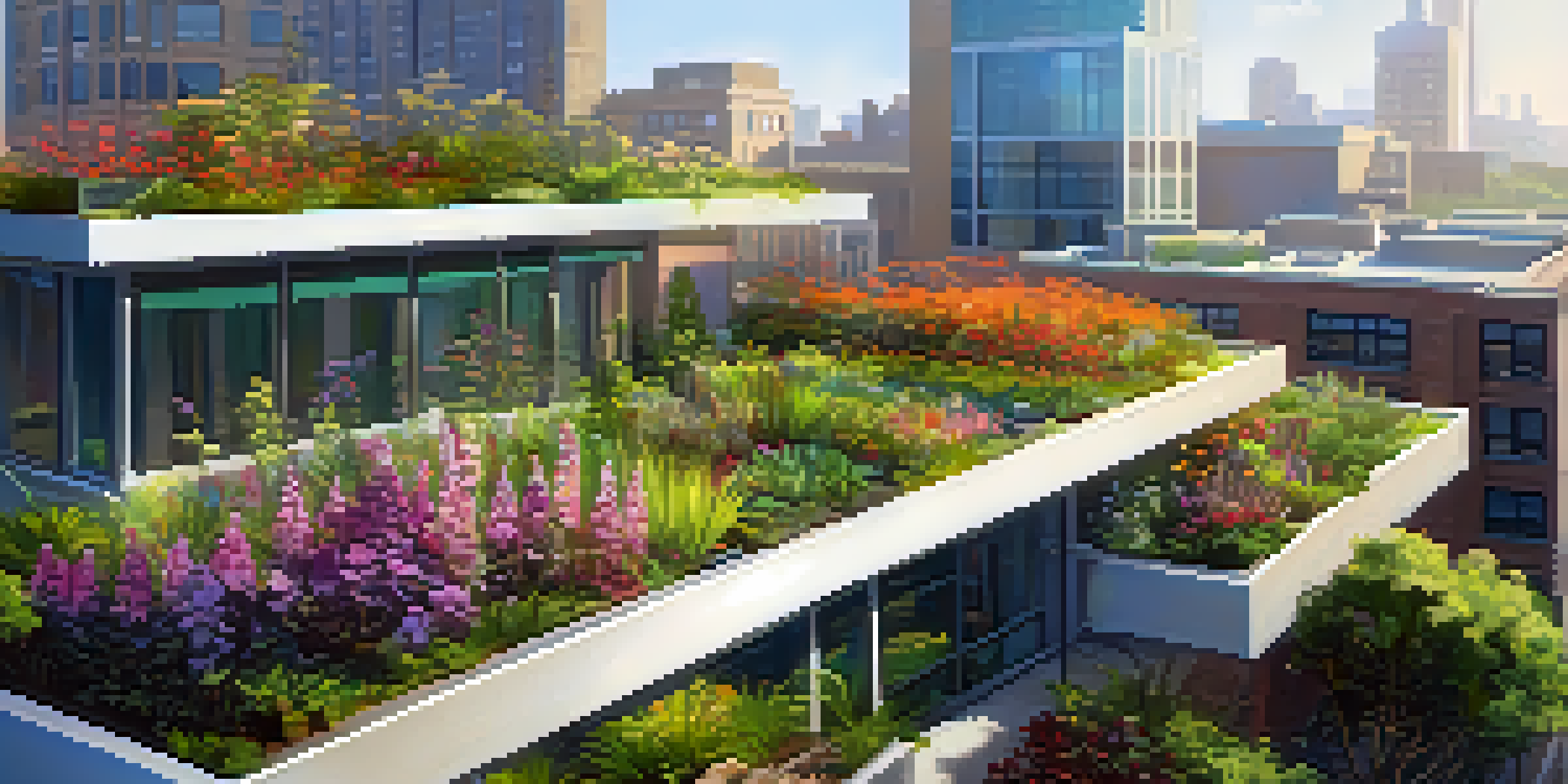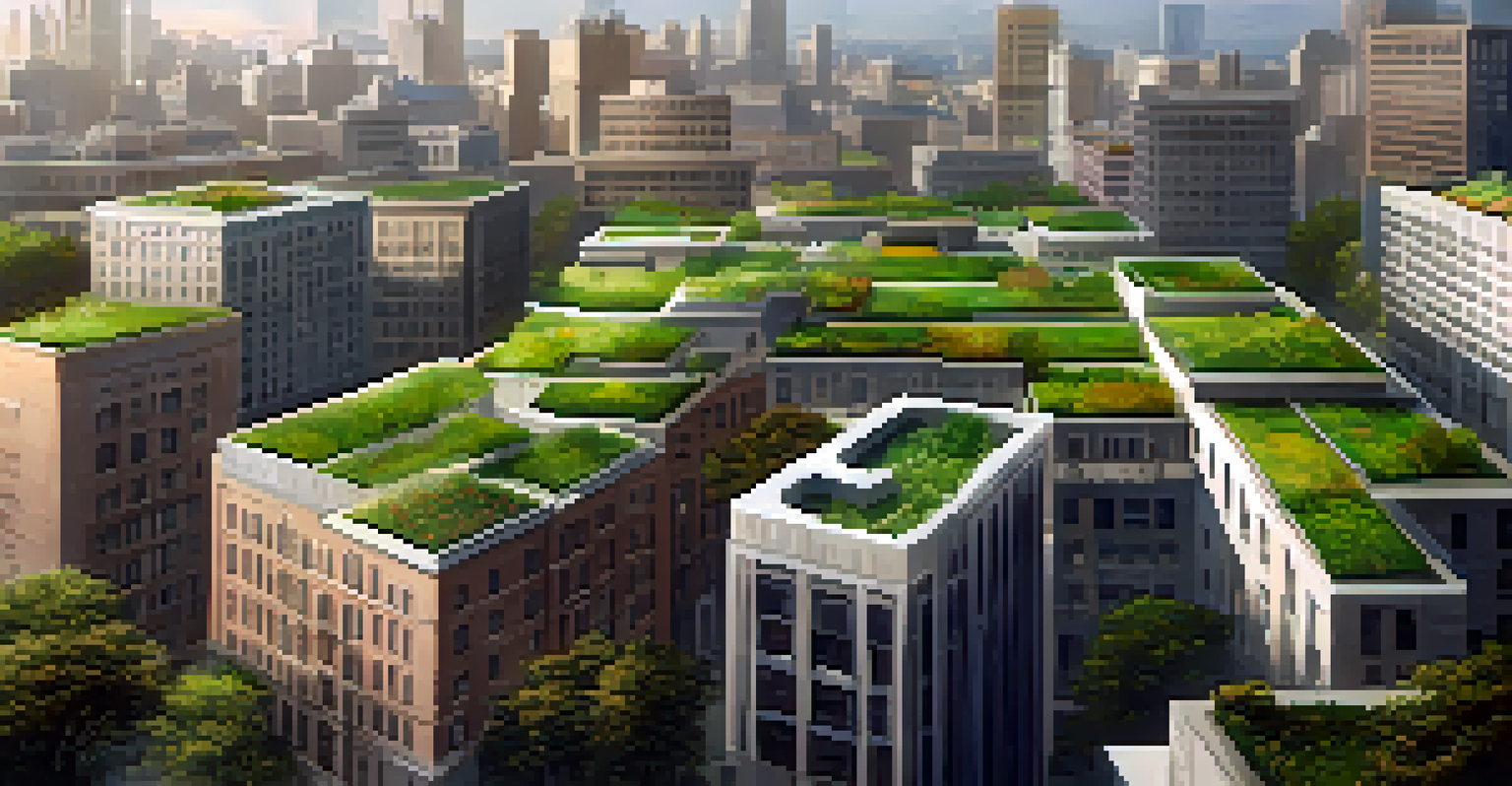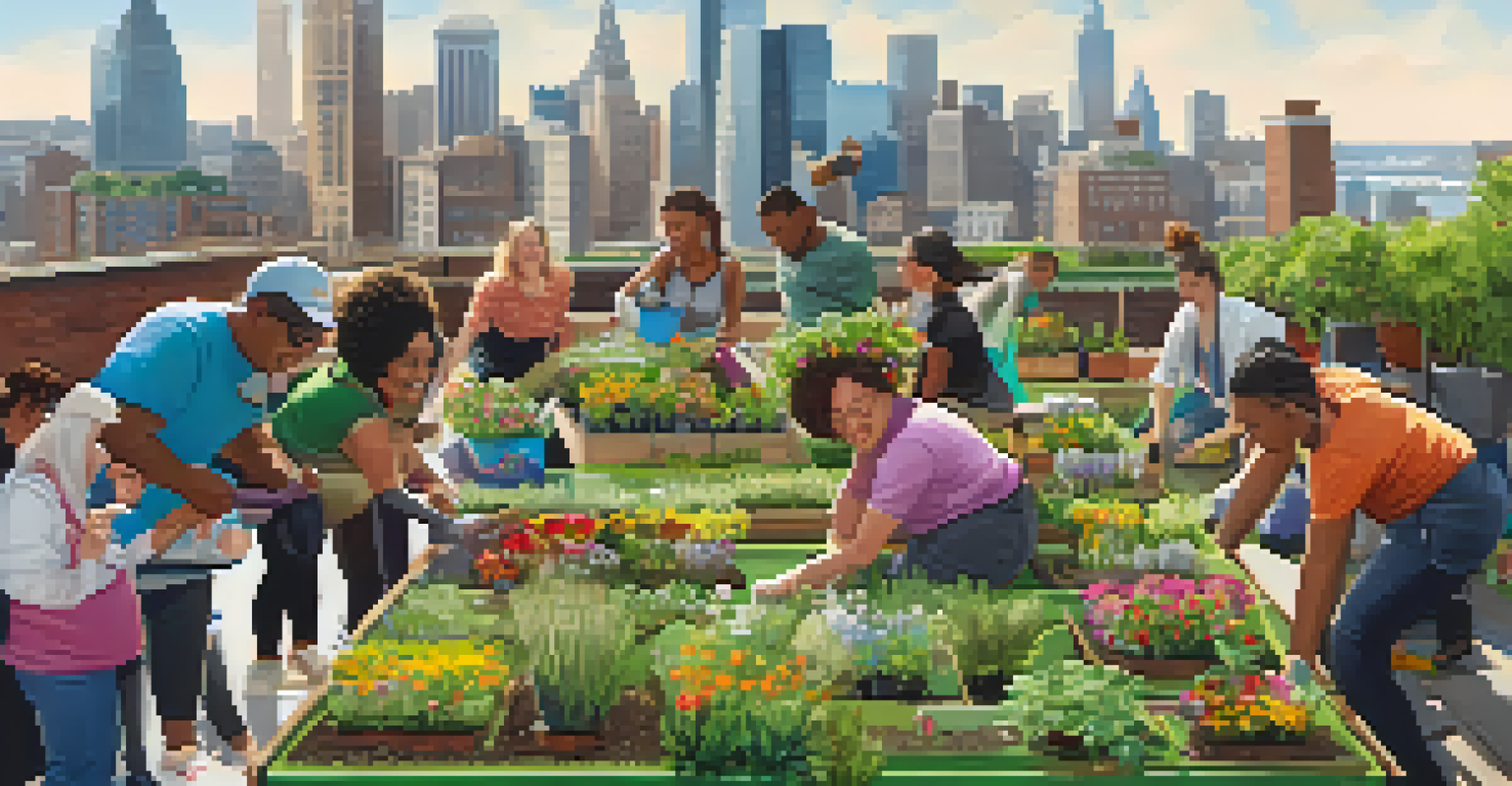Resilience and Adaptation: Green Roofs in Changing Climates

Understanding Green Roofs and Their Importance
Green roofs are layers of vegetation planted on rooftops, providing numerous benefits to urban environments. They help mitigate the impacts of climate change by absorbing rainwater, providing insulation, and improving air quality. In a time when cities are facing rising temperatures and increased rainfall, green roofs emerge as a vital solution.
The best time to plant a tree was twenty years ago. The second best time is now.
Imagine a sponge soaking up water; that's what green roofs do. They capture rainwater, which reduces runoff and helps prevent flooding. This feature is particularly crucial as extreme weather events become more common due to climate change.
Additionally, green roofs can significantly lower energy costs. By acting as an insulating barrier, they keep buildings cooler in summer and warmer in winter, leading to reduced reliance on heating and cooling systems. This not only saves money but also decreases greenhouse gas emissions.
How Green Roofs Enhance Urban Biodiversity
Urban areas often lack natural habitats, leading to a decline in local wildlife. Green roofs can create new habitats for various species, including birds, bees, and butterflies. By incorporating native plants, green roofs support local ecosystems and enhance biodiversity.

Think of a green roof as a mini-ecosystem. It provides a space for pollinators to thrive, which is essential for plant reproduction and maintaining healthy urban greenery. This is particularly important as many pollinator species are facing threats from habitat loss and climate change.
Green Roofs Mitigate Climate Change
Green roofs absorb rainwater, provide insulation, and improve air quality, making them essential in combating climate change impacts.
Moreover, the presence of diverse plant life on green roofs can improve the overall health of urban environments. By filtering pollutants and producing oxygen, these roofs contribute to cleaner air, benefiting both residents and wildlife alike.
Combatting Urban Heat Islands with Green Roofs
Urban heat islands are areas within cities that experience significantly higher temperatures than their rural surroundings. This phenomenon occurs due to concrete, asphalt, and limited green space. Green roofs can help combat this issue by providing a cooler alternative.
Nature does not hurry, yet everything is accomplished.
When sunlight hits traditional rooftops, it gets absorbed and retained, increasing temperatures. Green roofs, on the other hand, reflect sunlight and provide shade, effectively reducing local temperatures. This cooling effect can lower the overall heat in the city, making it more comfortable for residents.
Additionally, by mitigating the urban heat island effect, green roofs can reduce energy consumption. With cooler temperatures, buildings require less air conditioning, which not only saves money but also reduces fossil fuel use and associated emissions.
The Role of Green Roofs in Stormwater Management
Stormwater management is a growing concern in urban planning, particularly as climate change leads to more intense rainfall. Green roofs play a significant role in managing stormwater by absorbing and filtering rainwater before it reaches the drainage system. This helps to reduce the risk of flooding in cities.
Picture a bucket catching raindrops; green roofs act like that bucket, holding water temporarily and allowing it to evaporate or be absorbed by plants. This process reduces the volume and speed of stormwater runoff, which can overwhelm traditional drainage systems.
Enhancing Urban Biodiversity
By creating new habitats for wildlife, green roofs support local ecosystems and enhance urban biodiversity.
Furthermore, the vegetation on green roofs improves water quality. As rainwater filters through the soil and plant roots, pollutants are removed, leading to cleaner water entering the drainage system. This contributes to healthier waterways and ecosystems downstream.
Economic Benefits of Implementing Green Roofs
While the initial investment in green roofs can be higher compared to traditional roofs, the long-term economic benefits are substantial. Green roofs can extend the lifespan of a roof by protecting it from UV rays and extreme temperatures, leading to reduced maintenance and replacement costs.
Moreover, buildings with green roofs can command higher property values. The aesthetic appeal and environmental benefits often attract tenants and buyers willing to pay a premium for eco-friendly spaces. This economic incentive is increasingly recognized by developers and city planners.
Additionally, green roofs can contribute to job creation in sectors such as landscaping, horticulture, and green technology. As more cities adopt green infrastructure, the demand for skilled workers in these fields is likely to grow, boosting local economies and fostering innovation.
Green Roofs as a Community Engagement Tool
Green roofs can serve as communal spaces, promoting interaction and engagement among residents. They can be designed as gardens where community members can come together to plant, maintain, and enjoy the greenery. This fosters a sense of belonging and increases social cohesion in urban areas.
Think of a green roof as a neighborhood park elevated above the ground. It offers a unique gathering space that can be used for events, educational workshops, and relaxation. This connection to nature can also enhance mental well-being, providing a respite from the hustle and bustle of city life.
Economic Benefits of Green Roofs
Despite higher initial costs, green roofs offer long-term economic advantages through increased property values and job creation.
In addition to community engagement, green roofs can serve as educational platforms. Schools and organizations can use them to teach about sustainability, ecology, and urban agriculture, inspiring future generations to care for their environment.
Challenges and Solutions for Green Roof Implementation
Despite their many benefits, the implementation of green roofs can face challenges such as structural limitations, high installation costs, and maintenance concerns. Not every building is equipped to support the additional weight of a green roof, which can pose a barrier to adoption.
However, advancements in technology and materials are making green roofs more accessible. Lightweight systems and modular green roof designs allow for easier installation on various building types, expanding the potential for green roofs in urban areas.

Additionally, community initiatives and government incentives can support green roof projects, making them more financially viable. By promoting awareness and providing resources, cities can encourage property owners to embrace this sustainable solution.